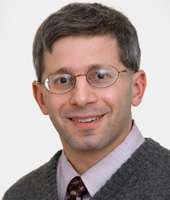MBTA Allows Boston's School Children to Be Heavily Exposed to Alcohol Advertising, SPH Study Finds
While other cities have adopted bans on alcohol advertising on public transit systems, Boston’s MBTA is allowing youths to be exposed heavily to such ads, some of which are designed to entice young people to drink, a new study by a team of Boston University School of Public Health researchers shows.

The study, published online in the November supplement of the American Journal of Public Health, reveals that on a typical weekday, the alcohol advertising exposure among Boston youths, ages 11-18, via MBTA trains is 5.5 times greater than the exposure among this age group that alcohol companies would achieve through a televised Super Bowl commercial. Approximately 9,615 Boston Public School commuters use the transit system daily.
The study, led by Michael Siegel, professor of community health sciences at BUSPH, notes that cities such as Chicago, Los Angeles, Philadelphia, San Francisco and Washington D.C. have policies that prohibit alcohol ads on public transit systems. Previous studies have shown that alcohol advertising is linked to youth alcohol consumption and that it undermines the alcohol-prevention messages learned in school. The Center on Alcohol Marketing and Youth found that people aged 12 to 20 are 96 more times likely to be exposed to an advertisement that promotes alcohol, rather than one that discourages underage drinking.
Cigarette advertisements and ads containing violence and nudity are prohibited by the state-funded MBTA because they are deemed inappropriate.
“By allowing alcohol advertising on the T, the state is not only allowing alcohol companies to bombard our kids with enticing advertisements, it is also allowing these companies to successfully recruit new drinkers among underage youths in the Commonwealth,” Siegel said.
A proposal introduced in January in the Massachusetts House of Representatives by Rep. Martin J. Walsh of the 13th District would ban alcohol advertising on any property owned or operated by the Commonwealth, including the MBTA. Siegel testified before the Joint Committee on State Administration and Regulatory Oversight in September on the importance of legislators acting on this bill.
In the published study, a team of researchers recorded the number of, and nature of, alcohol advertisements in every car of four consecutive trains on each of the four MBTA subway lines: the red, green, orange, and blue lines. The same survey was conducted one month later. In total, the group sampled 142 subway cars, which represents 29 percent of the 246 cars in operation on the four transit lines.
The researchers found a total of 267 alcohol advertisements on the 142 subway cars, or an average of about 2 alcohol ads per car. Based on MBTA ridership statistics, that translates into a total of 1.2 million advertising exposures on a typical weekday. Given the number of Boston Public School students who ride the T, the research team estimated that there are 18,000 advertising exposures on a typical weekday among those youths.
“Parents do not stand a chance in protecting their children against this powerful advertisement campaign designed by alcohol companies and enabled by the state of Massachusetts,” Siegel said.
Besides Siegel, researchers on the study included BU School of Public Health students Justin Nyborn, Siphannay Nhean, and Kimber Wukitsch.
Submitted by Lisa Chedekel
chedekel@bu.edu